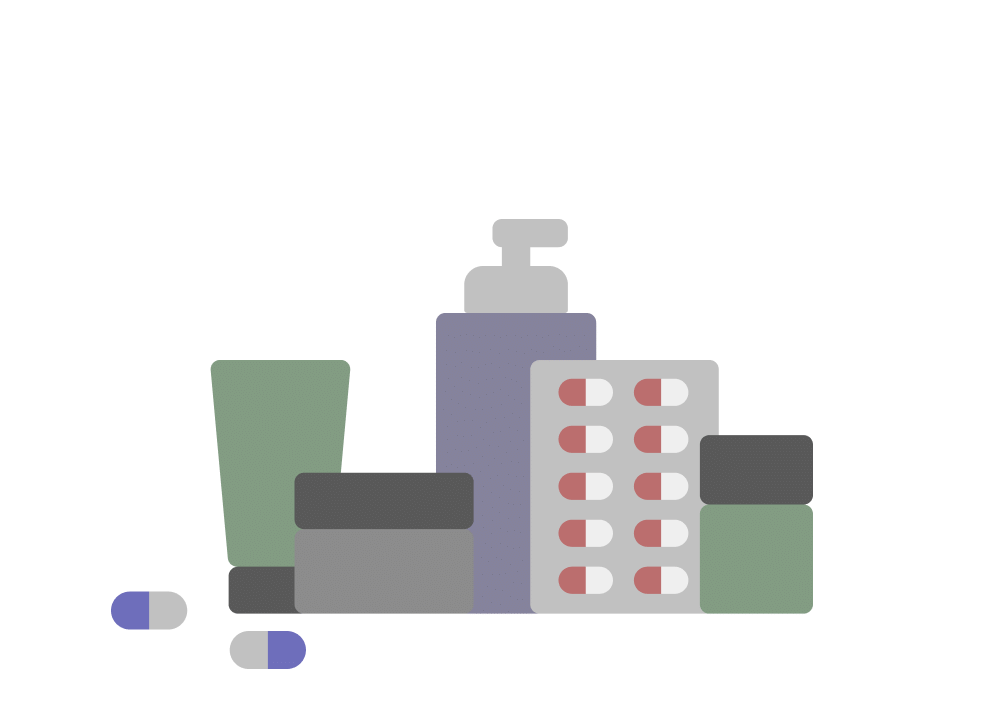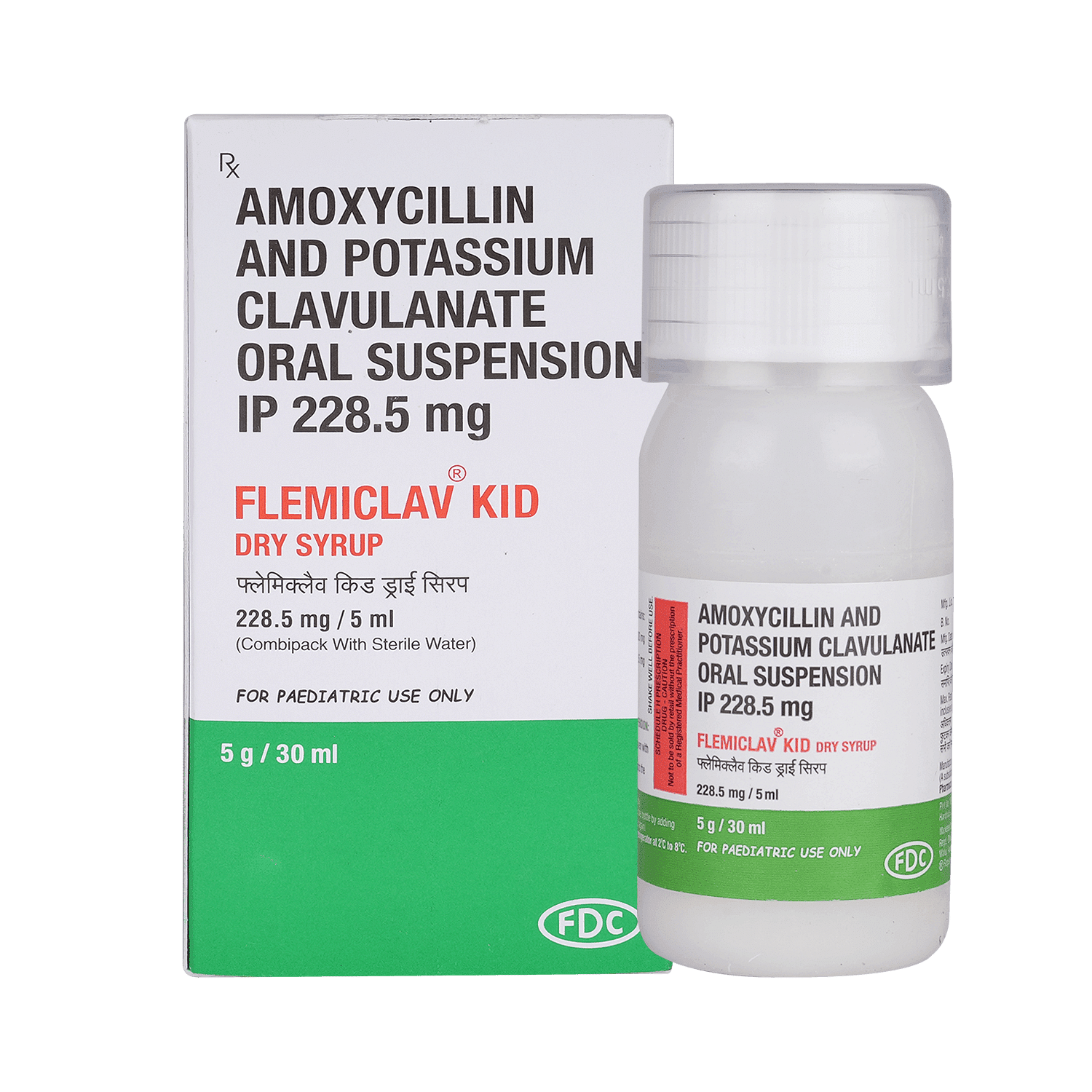
Sebclav Dry Syrup
Manufacturer
Sebert Lifesciences
Salt Composition
Amoxycillin (200mg) + Clavulanic Acid (28.5mg)
Key Information
Short Description
Sebclav Dry Syrup is an antibiotic medicine that helps treat bacterial infections of the ear, nose, throat, chest, lungs, teeth, skin, and urinary tract.
Dosage Form
Dry Syrup
Introduction
Sebclav Dry Syrup is an antibiotic medicine that helps treat bacterial infections of the ear, nose, throat, chest, lungs, teeth, skin, and urinary tract. It is capable of killing bacteria that have become resistant to other therapies and thus also helps treat tuberculosis that is resistant to other treatments.
Directions for Use
Your child must complete the entire course of antibiotics. Stopping too soon may cause the bacteria to multiply again or cause another infection.
How it works
Sebclav Dry Syrup is an antibiotic. It has two active agents amoxycillin and clavulanic acid. Amoxycillin works by preventing the formation of the bacterial protective covering (cell wall) essential for the survival of the bacteria. Whereas clavulanic acid serves a special purpose of inhibiting an enzyme (beta-lactamase) that is produced by resistant bacteria. This makes the combination of amoxycillin and clavulanic acid an effective line of treatment for many types of infections.
Quick Tips
Your child must complete the entire course of antibiotics. Stopping too soon may cause the bacteria to multiply again or cause another infection. Encourage your child to drink plenty of water in case diarrhea develops as a side effect. Never give Sebclav Dry Syrup until and unless prescribed by the doctor. Do not give Sebclav Dry Syrup to treat common cold and flu-like symptoms caused by viruses. Check ‘expiry’ before giving Sebclav Dry Syrup to your child. Immediately discard all the expired medicines.
Related Medicines

Moxikind-CV Dry Syrup

Advent 228.5mg Dry Syrup Tangy Orange

Moxiliv CV Dry Syrup

Flemiclav Kid 200 mg/28.5 mg Dry Syrup

Cellmox CV Dry Syrup

Moxclik CV Dry Syrup

Jasmox CV Dry Syrup

Amoxylimb CV Dry Syrup

Moxright CV Dry Syrup

Bax CV 200 mg/28.5 mg Dry Syrup
Frequently asked questions
Can other medicines be given at the same time as Sebclav Dry Syrup?
Giving Sebclav Dry Syrup with other medications should always be discussed with a healthcare professional. It's crucial to tell your doctor about all other medicines your child is taking before starting Sebclav Dry Syrup, and check for potential interactions.
Can I get my child vaccinated while on treatment with Sebclav Dry Syrup?
Generally, antibiotics do not interfere with the ingredients in vaccines or cause adverse reactions. However, it's best to avoid giving your child any vaccine until they have recovered from their illness.
Which lab tests may my child undergo while taking Sebclav Dry Syrup on a long-term basis?
Periodic kidney and liver function tests may be needed during prolonged treatment with Sebclav Dry Syrup. This is to ensure your child's well-being.
Can I give a higher than the recommended dose of Sebclav Dry Syrup to my child?
Never exceed the recommended dosage of this medication as doing so can increase side effects. If you notice any worsening of symptoms, contact your doctor for reevaluation.
Can I stop giving Sebclav Dry Syrup to my child when the symptoms are relieved?
No, do not abruptly discontinue this medication until the full course is completed. Symptoms may improve before the infection is fully eradicated. Therefore, continue treatment as prescribed to achieve optimal recovery.
Can the use of Sebclav Dry Syrup cause diarrhea?
Yes, some children experience diarrhea after taking Sebclav Dry Syrup. This is because it kills harmful bacteria. Additionally, it can impact the good bacteria in your child's stomach, leading to diarrhea. Encourage your child to drink plenty of fluids if they have diarrhoea and consult a doctor if it persists or you notice signs of dehydration such as dark-colored and strong-smelling urine.
Do all viral common colds result in secondary bacterial infection?
Most often, bacterial infections don't occur alongside viral infections. Antibiotics should be used only after consulting a doctor for specific situations.
The mucus coming out of my child’s nose is yellow-green. Is it a sign of a bacterial infection?
Yellow or green mucus in the nose does not always indicate a bacterial infection. It's common during a cold, and your child may see a change in the consistency of their mucus.
Is there any sign which shows that my child needs immediate medical attention?
Seek immediate medical help if your child experiences severe allergic reactions (difficulty breathing, skin rashes), gastrointestinal distress (severe diarrhea), or signs of liver damage like weakness, paleness, or vomiting.


